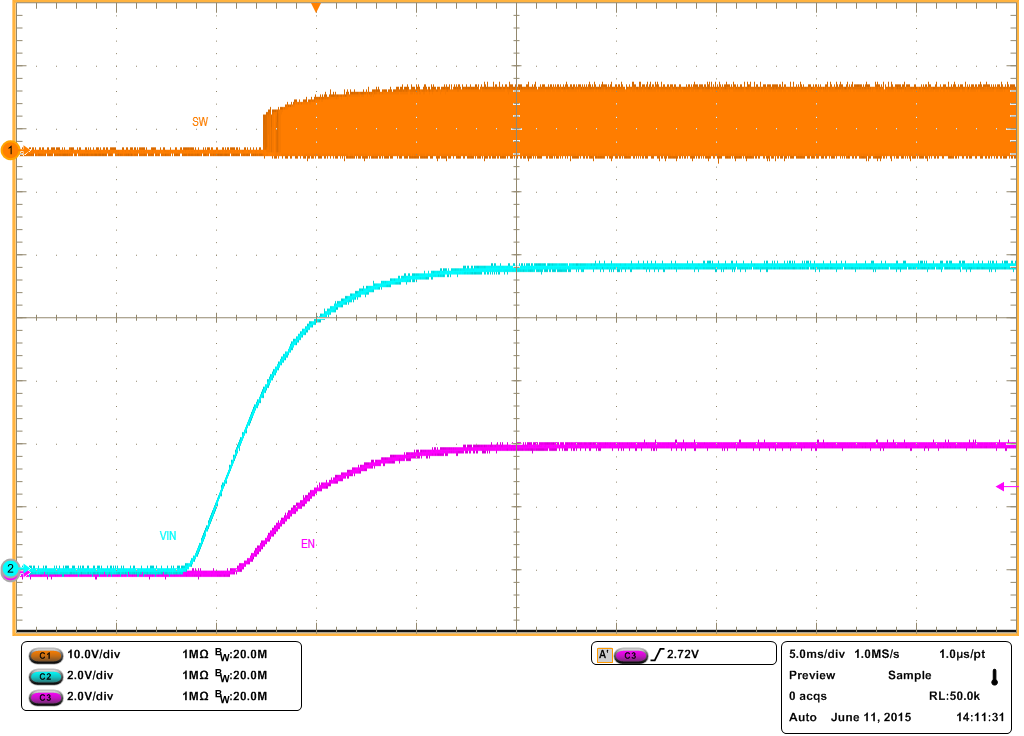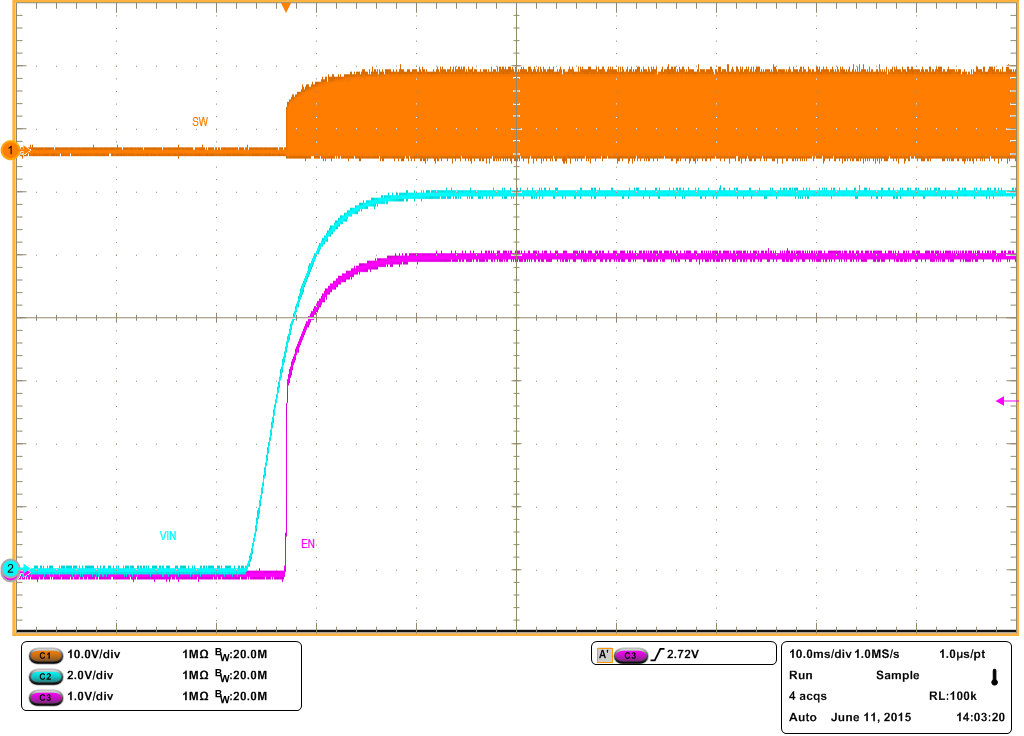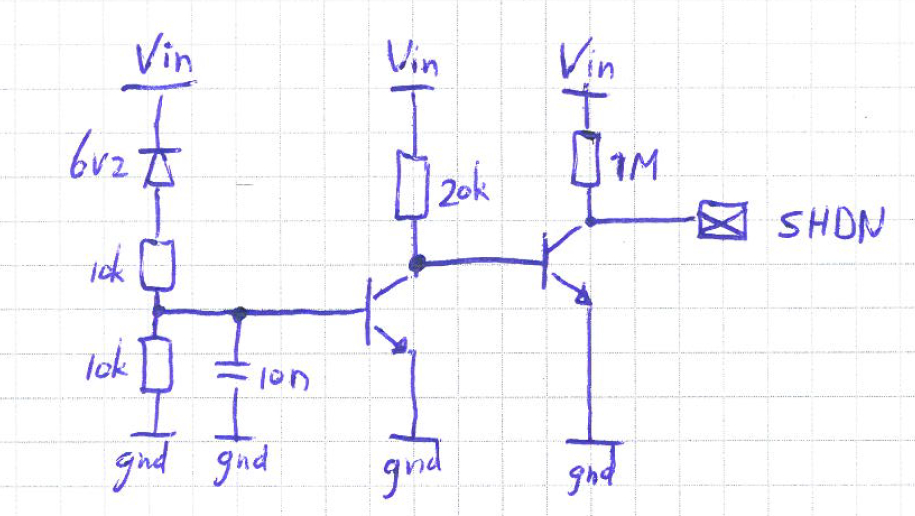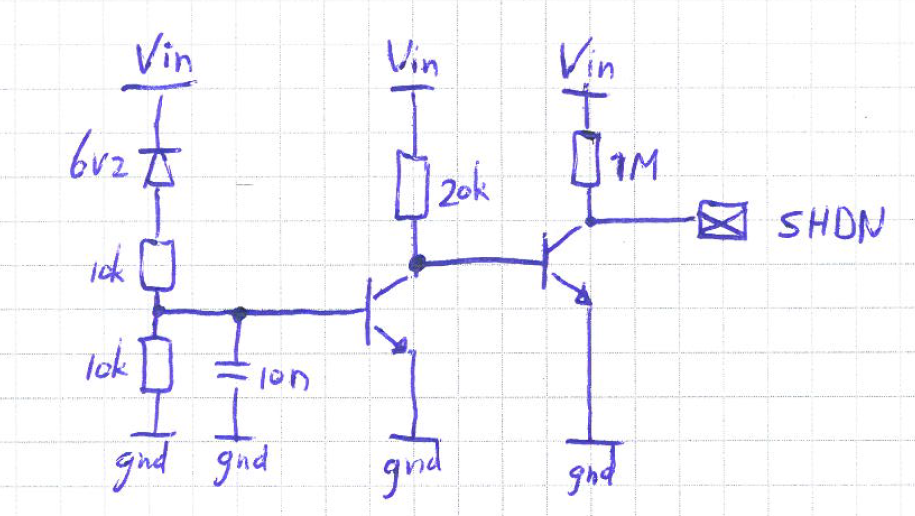Hi,
I am using the LMR14206 for a 10-30Vin, 5V out followed by an LDO for 3V3 out.
When the LMR14206 starts up with an input voltage lower or slightly above the programmed output voltage , the device starts working but exhibits a sort of hickup behavior.
When the input voltage is around 7.5V the device works correctly.
Is there no internal startup circuit that prevents the device from starting too early causing such behavior.
If this is normal behavior, do you have a recommendation for a circuit to make sure the device does not start up before Vin =>7.5V??
Below some pictures I took of the in/output voltages





